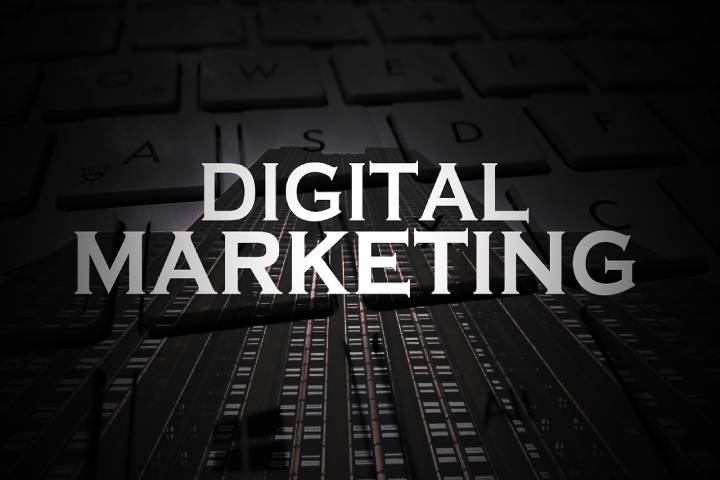Marketing
What is The Gray Market, and How to Protect Against it?
The gray market, gray economy, and gray securities. Here we are talking about gray market products rather than gray securities or the gray economy.

Three things could be confused with one another: the gray market, gray economy, and gray securities. Here we are talking about gray market products rather than gray securities or the gray economy. Gray securities are shares of a corporation traded before being publicly distributed. At the same time, the gray economy is made of assets and services that elude state taxation.
1. So, what is the gray market?
Anti-counterfeit items that are sold legitimately but outside sanctioned distribution ways are called gray market goods. It hurts the brand and violates the intellectual property protection of any business. The gray market includes everything from vehicles and cameras to software and medicines. The gray market has been running for a long time. To quickly explain it, let’s take a more straightforward example.
The first thing that a manufacturer or brand does is sell a product to a distributor. After that, the distributor sells it to accredited retail shops. Subsequently, those outlets sell the product to buyers. Although this might be a way to sell anti-counterfeit items, it still hurts a brand. In a perfect system, the precise quantity of products would be produced and put up for retail, hoping that the public would purchase all of it.
Nevertheless, the reality is a bit different. If a merchant or retailer is left with surplus or old stock, they can sell it at slashed rates to other traders. This violates intellectual property protection, but some merchants still chose to sell surplus stock to such dealers.
These traders later market the store to the public at further discounted prices. And it is way easier to fool the public because unauthorized sellers often look the same to customers as authorized sellers. The only noticeable contrast is lower costs. But these traders can’t provide company warranties. And some of the products might not satisfy regulatory criteria for the country in which they are being sold.

Sometimes the brands or distributors supply the gray market themselves. However, brands usually refrain from doing so as it hurts their reputation and helps those retailers who sell counterfeit items.
2. How to protect against the gray market?
The first step is to identify unapproved dealers. Knowing who is running the gray market is the key to stopping them. And the best way to monitor the gray market dealers is to look for the products at lower prices than the official retailers or sites. For brands, they must watch the MAP of the products. Most of the MAP violators are often connected to the gray market.
Secondly, the brands must educate their consumers about the official stores’ sites. While advertising and marketing products, the brands can easily throw in the knowledge and importance of buying the products from original and authorized stores and locations. Consumer education helps offline and online brand protection, allows customers to purchase anti-counterfeit and authentic products, and gives the customer a warranty.
If the brand spots gray market retailers, they can send a cease-and-desist letter. It serves as a prelude for the subsequent legal actions that the brand can take in case the dealer doesn’t stop selling unsanctioned products. The brands can take legal steps because they violate intellectual property protection and MAP violations, including many other offenses.
Business
Navigating the Process of Selling Deceased Estate Shares
This article aims to provide a comprehensive guide to selling shares from a deceased estate. Process of Selling Deceased Estate Shares.

Table of Contents
1. Understanding the Basics of Selling Deceased Estate Shares
Dealing with a deceased estate can be a challenging and emotional process, especially when it comes to handling financial assets like shares. This article aims to provide a comprehensive guide to selling shares from a deceased estate.
2. What are Deceased Estate Shares?
Deceased estate shares refer to the stocks and shares that were owned by an individual who has passed away. These shares become part of the deceased’s estate and are subject to the terms of their will or estate plan.
3. The Importance of Valuing the Shares
The first step in selling deceased estate shares is to obtain a current valuation. This valuation is crucial for several reasons: it helps in distributing the estate among beneficiaries, it may be necessary for tax purposes, and it gives an idea of the market value of the shares.
4. Legal Requirements and Executor Responsibilities
The executor of the estate plays a pivotal role in the management and distribution of the deceased’s assets. This section will cover the legal responsibilities and steps the executor needs to take to lawfully sell the shares.
5. Obtaining Probate
Before any action can be taken with the shares, it’s often necessary to obtain probate. Probate is a legal process that confirms the executor’s authority to deal with the deceased’s assets.
Transferring Shares into the Executor’s Name
Once probate is granted, shares may need to be transferred into the name of the executor. This process varies depending on the company and the type of shares.
6. The Process of Selling Shares
After completing legal formalities, the executor can proceed with selling the shares. This section will outline the steps involved in this process, including choosing a brokerage or financial service, understanding market conditions, and making informed decisions.
Deciding on the Right Time to Sell
Timing can significantly impact the returns from selling shares. Executors need to consider market conditions and financial advice to determine the best time to sell.
Completing the Sale
This subsection will detail the actual process of selling shares, including placing orders, handling transaction fees, and ensuring all regulatory requirements are met.

7. Navigating Tax Implications and Reporting
Managing tax obligations is a critical aspect of selling deceased estate shares. This section will explain the potential tax implications and the importance of accurate reporting for both capital gains tax and inheritance tax considerations.
Understanding Capital Gains Tax Responsibilities
When shares are sold, any profit made from the time of the deceased’s passing to the sale date may be subject to capital gains tax. Executors need to be aware of these implications and plan accordingly.
Inheritance Tax Considerations
In some jurisdictions, the value of the deceased estate’s shares might impact inheritance tax calculations. It’s essential for executors to understand these aspects in order to ensure compliance with tax laws.
8. Common Challenges and How to Overcome Them
Selling deceased estate shares can present unique challenges. This section will discuss common issues such as disputed wills, fragmented information about the shares, and market volatility.
Dealing with Disputed Wills and Beneficiary Disagreements
Disputes over the will or disagreements among beneficiaries can complicate the process. Executors must handle these situations delicately and legally.
Managing Market Volatility
Shares can be subject to market fluctuations. Executors should be prepared for this volatility and may need to consult financial advisors to navigate these waters effectively.
9. Tips for Executors Handling Deceased Estate Shares
This section will provide practical advice for executors, including the importance of seeking professional advice, keeping thorough records, and communicating clearly with beneficiaries.
Seeking Professional Financial and Legal Advice
The complexity of selling shares from a deceased estate often necessitates professional advice. This can range from legal counsel to financial advisory services.
Record Keeping and Communication with Beneficiaries
Maintaining transparent and thorough records is crucial. Executors should also prioritize clear and consistent communication with all beneficiaries to avoid misunderstandings.
Conclusion
Selling shares from a deceased estate is a responsibility that requires careful attention to legal, financial, and interpersonal dynamics. By understanding the process, staying informed about tax obligations, and tackling challenges head-on, executors can fulfill their duties effectively and respectfully.
-

 Instagram4 years ago
Instagram4 years agoBuy IG likes and buy organic Instagram followers: where to buy them and how?
-

 Instagram4 years ago
Instagram4 years ago100% Genuine Instagram Followers & Likes with Guaranteed Tool
-

 Business5 years ago
Business5 years ago7 Must Have Digital Marketing Tools For Your Small Businesses
-

 Instagram4 years ago
Instagram4 years agoInstagram Followers And Likes – Online Social Media Platform
















